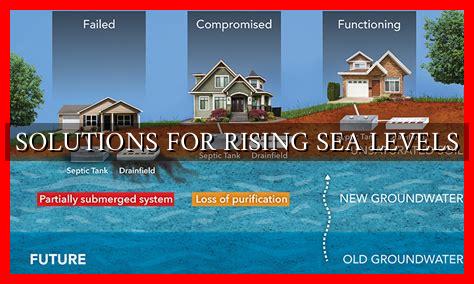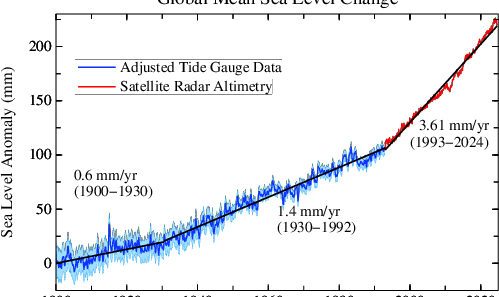As the relentless tide of climate change surges forward, rising sea levels stand as an indomitable challenge. Surpassing the boundaries of mere inconvenience, this phenomenon heralds profound implications for ecosystems, human settlements, and economic infrastructures. The oceans are not merely rising; they symbolize a heralding wave that calls us to action. In embarking on this odyssey of preparation and adaptation, we must contemplate the complexities of this global dilemma.
We find ourselves at a critical juncture, akin to sailors navigating through tempestuous waters. The horizon is obscured, and treachery lurks beneath the surface. Yet, with fortitude and ingenuity, humanity can chart a course through these uncharted waters. This article delves into strategies that can be employed to address the encroaching menace of rising sea levels, ensuring that we not only survive but thrive amidst the aquatic transformations ahead.
The metaphor of the rising tide not only serves as an alarm but also compels us to rethink our existing paradigms. As we face this impending deluge, our approach must transcend passive acknowledgment to proactive engagement. Communities worldwide must prepare to mitigate risks, adapt responsibly, and embrace sustainable solutions.
By examining the plight of coastal communities—bewitched by the siren song of the sea—we can better understand the necessity of adaptation.
Mitigating Risks through Resilient Infrastructure
Envision coastal cities as fortresses against a surging tide. The first line of defense against rising sea levels is resilient infrastructure, enhanced to withstand the ravages of water. Urban planners and architects are now tasked with transforming traditional design principles into adaptive structures that embrace the challenges posed by marine encroachment. This includes elevating buildings, enhancing flood defenses, and incorporating green spaces to absorb excess rainfall.
Adaptation requires a multifaceted approach that integrates advanced forecasting technologies and predictive analytics. Smart cities are emerging as beacons of hope, utilizing real-time data to inform decision-making processes. Utilizing digital twins and simulation models, we can preemptively strategize urban layouts, ensuring that new developments maintain a safe distance from vulnerable shorelines. Investing in these technologies ultimately preserves human life and the environment.
Moreover, restoring natural ecosystems not only enhances biodiversity but also functions as a natural barrier against flooding. Mangrove forests, wetlands, and other coastal habitats can serve as buffer zones against storm surges while simultaneously promoting carbon sequestration. Rather than solely constructing seawalls, we must emphasize the vital role of nature in our arsenal against climate-induced disasters.
Community Engagement: The Power of Collective Action
Yet, robust infrastructure alone is insufficient without a well-informed populace. The fabric of community engagement must be intricately woven into the tapestry of adaptation strategies. Grassroots initiatives and local coalitions can empower residents to advocate for sustainable practices and hold policymakers accountable.
Education and awareness campaigns play a pivotal role in transforming perceptions about climate change. When communities are educated about the effects of rising sea levels, they become more vigilant stewards of their environments. Local governments can facilitate workshops and informational sessions, encouraging citizen participation in coastal planning processes. This participatory approach ensures that even the most marginalized voices are amplified, fostering equity within adaptation strategies.
Innovative financing mechanisms can also stimulate community resilience. Crowdfunding, private-public partnerships, and governmental grants can be harnessed to finance local projects aimed at combating rising sea levels. When the community invests in its own future, a collective sense of ownership emerges, promoting unity in the face of adversity.
The Seamless Interplay of Urban and Natural Systems
Understanding the intricate interplay between urban development and natural systems is crucial for long-term resilience. Embracing a holistic approach, cities must strive to harmonize human activities with ecological imperatives. This entails reimagining urban landscapes where green roofs flourish, urban agriculture thrives, and permeable surfaces replace traditional cement where possible.
Furthermore, promoting sustainable transportation networks mitigates reliance on fossil fuels and reduces greenhouse gas emissions—a counterproductive cycle exacerbating climate change. As we see the specter of climate change expand, prioritizing walking, biking, and utilizing public transportation transforms urban environments into more livable spaces.
In this ecological dance, the integration of renewable energy sources is paramount. Investment in solar, wind, and hydropower serves not only to reduce our carbon footprint but simultaneously provides resilience against the energy disruptions that accompany acute climatic events.
Adaptation through Innovation: The Technological Frontier
The solution to rising sea levels thrives at the intersection of innovativeness and technology. Our ingenuity must rise to meet this formidable oceanic challenge. As digital innovation propels us forward, the possibilities for adaptation expand. Drones, satellite imagery, and mapping technologies can provide crucial data on coastal topography, enabling more accurate and timely decisions.
In addition, artificial intelligence can optimize flood management systems, allowing cities to respond dynamically during severe flooding events. Autonomous sensors can monitor sea level changes, offering real-time insights essential for hazard preparedness.
In conclusion, the battle against rising sea levels necessitates a comprehensive and cohesive approach that embraces resilience, community engagement, and innovative adaptations. Just like the phoenix rising from the ashes, humanity has the potential to emerge stronger and wiser amidst adversity. As the oceans rise, so too must our resolve to confront this ever-looming challenge. The time has come to equip ourselves with knowledge, resources, and an unwavering commitment to not merely survive but thrive in the face of nature’s formidable powers. Through collaboration, foresight, and ingenuity, we can sculpt a future grounded in resilience and interconnectedness, ensuring that our shores endure for generations to come.







